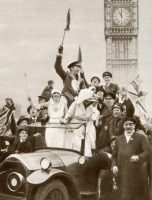
A Century Ago, the Modern Middle East Was Born
As 1919 came to a close, people around the world were celebrating the holidays, grateful for the return of peace on earth after the convulsions of the Great War. “Peace on earth” was a relative concept; there was still fighting in Russia. But for the most part, the soldiers were home, and their families were looking forward to a new decade, free of conflict.
In Paris, there were long lines outside of restaurants, as the French celebrated the holiday with gastronomic exuberance. In Berlin, Vienna and Budapest there was less Christmas cheer, thanks to food shortages and inflation, but the people flocked to cafes and did their best to revive the old holiday traditions.… Seguir leyendo »





